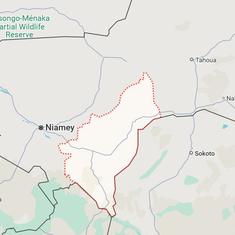The last Indian wildcard in the singles draw at the L&T Mumbai Open, Ankita Raina, will open her campaign against world No 233 Veronika Kudermetova on Wednesday.
The pressure of playing someone ranked about 60 places higher as the last Indian contender at the home tournament can be daunting, especially given that her other three compatriots lost in straight sets.
But the 24-year-old is taking it cool and focusing on her own game. “I have played her in doubles before. She has the Russian style of whacking the ball, and I plan to return in full power too,” she said in a chat with The Field.
Raina has had an up-and-down year, struggling in singles with only one runner-up finish, but winning four doubles titles on the International Tennis Federation circuit. But the bigger challenge this season has been maintaining her ranking. With a career-best ranking of 222, achieved in 2015, she has been India’s top-ranked singles player for about three years now – till Karman Kaur Thandi took over this week.
Currently ranked 293, Raina has been hovering around the 250-300 mark in the rankings, unable to make the last step towards the top 200s which would give her a chance at bigger events. Ask her what she thinks is holding her back, and she gives a forthright answer – the lack of a support structure while travelling.
“I have the support of Sports Authority of Gujarat and I can play the tournaments I want. But I have been travelling on the circuit alone for almost 10 years. It would help if I could have a coach travelling with me,” she said.
The Women’s Tennis Association allows coaches to talk to the player during matches and in the two days of the Mumbai Open itself, one can see the difference a mid-match chat can have on a player’s game.
Raina is coached by Hemant Bendre at the PYC Hindu Gymkhana in Pune, who is accompanying her in Mumbai, but it’s a luxury she doesn’t always have.

She recounted an incident when the absence of a travelling coach really affected her performance. “In Tashkent in 2014, I lost the first set [against Japan’s Risa Ozaki] but I leveled it to one set all. The other girl called her coach on court and then I lost the third set 6-1. [the end result was 2-6, 6-4, 1-6],” she recalled.
“I am away from weeks and I get to discuss the matches I played only after I return. When I am travelling I practice by myself and there is no one to watch me. When you play a lot of tournaments there are adjustments in your game and in each match you have to make changes. At that time, if you have a coach he can see and guide you. I understand tennis is an expensive sport and you can’t do that [provide assistance] from a grassroots level. But at least when a player reached a certain level…” she trailed of.
The 24-year-old is already a surprise exclusion from the government’s Target Olympic Podium Scheme, where Thandi and doubles specialist Prarthna Thombare were named. The All India Tennis Association had even asked TOPS to consider her as a medal prospects at next year’s Asian Games, but there is no update on that front.
“When I came to know [about her TOPS exclusion], I felt a bit low on the day. Because you are No 1 what else can I say? It’s not a decision I could do anything about so I have just let it be,” she said.
What does Indian women’s tennis lack?
The line of question invariably then goes to the what is holding back Indian women’s tennis, and why we see the players more on the ITF and less on the WTA circuit. As country’s top-ranked singles player for a while, Raina believes that it is not a question of potential, but of the right support.
“There is no doubt that Indian players have the potential, look at Karman now. But that question is asked frequently and having a support structure with a travelling coach could be the answer, at least for me. I know I am hitting the ball much better, but the level of competition on the tour is gone high. If you see on the circuit, almost all players are travelling with the coach. It is not the only one thing, but it is an important thing,’ she explained.
“It’s a process, you have to be patient. In tennis you don’t know when you will get that one big tournament, you just have to keep working hard and believing in yourself. I can definitely see my game improve over the last few years. After a certain level, it’s more mental because the level has gone up higher in Indian tennis,” the 24-year-old added.
In the last two years, she has got a chance to train in Valencia, with former world No 1 Dinara Safina’s coach. “The good thing is that I got to play with different players and play the tournaments there. I was there for a few weeks, but it helped because I won two doubles and reached one final after playing on clay there,’ she said.
Like all other Indian players, Raina is planning no off or pre-season and will continue with her training in Pune and a few more tournaments in India. But the bigger target is the Asian Games next year. She already has medals for India at the South Asian Games last year, winning gold in both women’s singles and doubles and reached the third round at the 2014 Games in Incheon.
For now, it’s over to the Mumbai Open to try and become only the second active Indian player to win a round at a WTA event.










